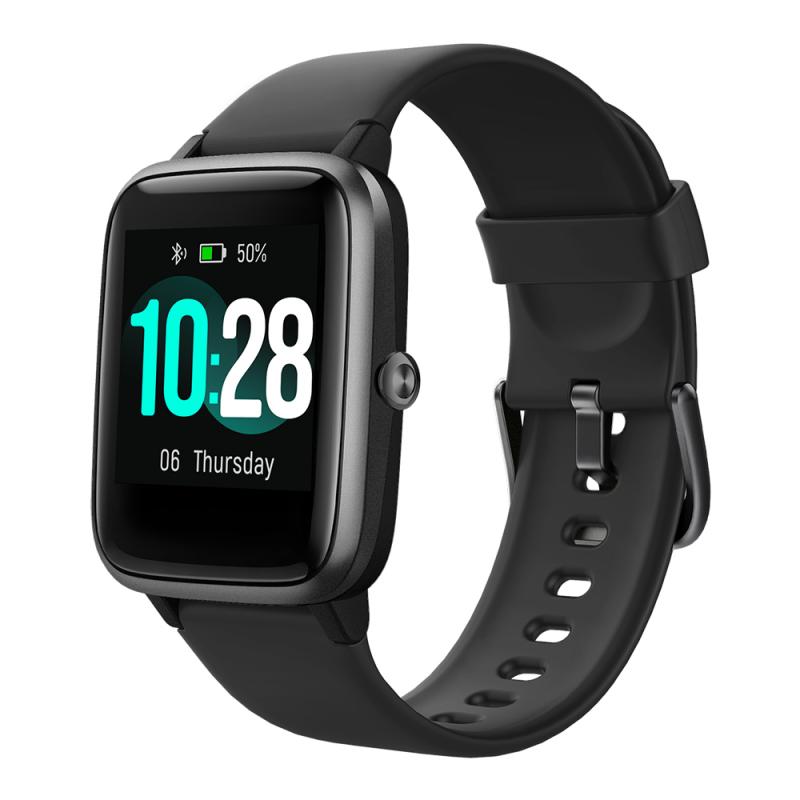How Does Smart Watch Track Sleep?
In recent years, smartwatches have become an integral part of our daily lives, offering a plethora of features that go beyond just telling time. One of the most intriguing and beneficial features of modern smartwatches is their ability to track sleep. Understanding how these devices monitor sleep can help users make informed decisions about their health and well-being. This article delves into the technology behind sleep tracking in smartwatches, the accuracy of these devices, and how users can leverage this information to improve their sleep quality.
The Technology Behind Sleep Tracking

Sensors and Data Collection
At the core of sleep tracking technology in smartwatches are various sensors that collect data while you sleep. The primary sensors involved include:
1. Accelerometer: This sensor detects movement and can determine whether you are awake, in light sleep, or in deep sleep based on your motion patterns. By analyzing the frequency and intensity of your movements, the accelerometer can provide insights into your sleep stages.
2. Heart Rate Monitor: Many smartwatches come equipped with optical heart rate sensors that measure your heart rate throughout the night. Changes in heart rate can indicate different sleep stages, as your heart rate tends to slow down during deep sleep and vary during REM (Rapid Eye Movement) sleep.
3. Gyroscope: This sensor works in conjunction with the accelerometer to provide more accurate data on your movements and orientation. It helps in distinguishing between different types of movements, such as rolling over versus minor twitches.
4. SpO2 Sensor: Some advanced smartwatches include a blood oxygen sensor (SpO2) that measures the oxygen levels in your blood. Low oxygen levels can indicate sleep apnea or other breathing issues during sleep.
Data Analysis and Algorithms
Once the sensors collect the raw data, sophisticated algorithms process this information to provide a comprehensive analysis of your sleep patterns. These algorithms use machine learning and statistical models to interpret the data and classify it into different sleep stages:
1. Awake: Periods when you are fully awake and possibly moving around.
2. Light Sleep: A lighter stage of sleep where you can be easily awakened.
3. Deep Sleep: A restorative stage of sleep that is crucial for physical recovery.
4. REM Sleep: A stage characterized by rapid eye movement, where dreaming occurs, and is essential for cognitive functions.
The algorithms take into account various factors such as movement, heart rate variability, and breathing patterns to provide a detailed sleep report.
Accuracy of Sleep Tracking
Factors Affecting Accuracy
While smartwatches offer a convenient way to monitor sleep, their accuracy can be influenced by several factors:
1. Sensor Quality: The accuracy of the sensors themselves plays a significant role. Higher-end smartwatches with advanced sensors tend to provide more accurate data.
2. Fit and Wearability: How well the smartwatch fits on your wrist can affect the accuracy of the data collected. A loose fit may result in inaccurate readings.
3. User Behavior: Activities before bed, such as consuming caffeine or alcohol, can affect sleep patterns and, consequently, the data collected by the smartwatch.
4. Environmental Factors: External factors like room temperature, noise, and light can also impact sleep quality and the accuracy of the data.
Comparing with Polysomnography
Polysomnography (PSG) is the gold standard for sleep studies, involving multiple sensors and a controlled environment to monitor various physiological parameters. While smartwatches cannot match the accuracy of PSG, they offer a practical and non-invasive way to track sleep on a daily basis. Studies have shown that smartwatches can provide reasonably accurate data for general sleep patterns, although they may not be as precise in identifying specific sleep stages.
Leveraging Sleep Data for Better Health
Understanding Your Sleep Patterns
By regularly monitoring your sleep, you can gain valuable insights into your sleep habits and patterns. Most smartwatches provide a detailed sleep report that includes:
1. Total Sleep Time: The total amount of time you spent sleeping.
2. Sleep Stages: The duration of each sleep stage (light, deep, REM).
3. Sleep Quality: An overall score or assessment of your sleep quality based on the data collected.
Identifying Sleep Issues
Consistent sleep tracking can help identify potential sleep issues such as:
1. Insomnia: Difficulty falling or staying asleep.
2. Sleep Apnea: Interrupted breathing during sleep, which can be indicated by low SpO2 levels.
3. Restless Leg Syndrome: Frequent movements during sleep that can disrupt sleep quality.
Improving Sleep Hygiene
Armed with data from your smartwatch, you can take steps to improve your sleep hygiene:
1. Establish a Routine: Going to bed and waking up at the same time every day can help regulate your internal clock.
2. Create a Sleep-Friendly Environment: Ensure your bedroom is dark, quiet, and cool to promote better sleep.
3. Limit Screen Time: Reduce exposure to screens before bedtime, as the blue light emitted can interfere with your sleep.
4. Monitor Lifestyle Factors: Pay attention to how diet, exercise, and stress levels affect your sleep and make necessary adjustments.
Smartwatches have revolutionized the way we monitor and understand our sleep patterns. By leveraging advanced sensors and sophisticated algorithms, these devices provide valuable insights into our sleep quality and help identify potential issues. While they may not replace professional sleep studies, smartwatches offer a practical and accessible way to track sleep on a daily basis. By understanding and utilizing the data provided by these devices, users can take proactive steps to improve their sleep hygiene and overall health. As technology continues to advance, we can expect even more accurate and comprehensive sleep tracking features in future smartwatches, further enhancing our ability to achieve better sleep and well-being.

There are no comments for this blog.